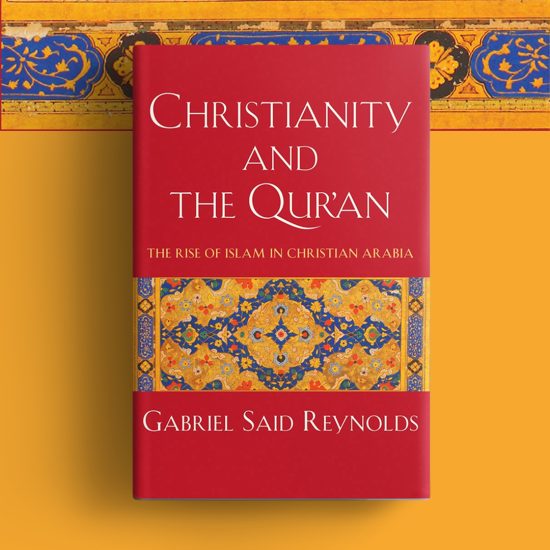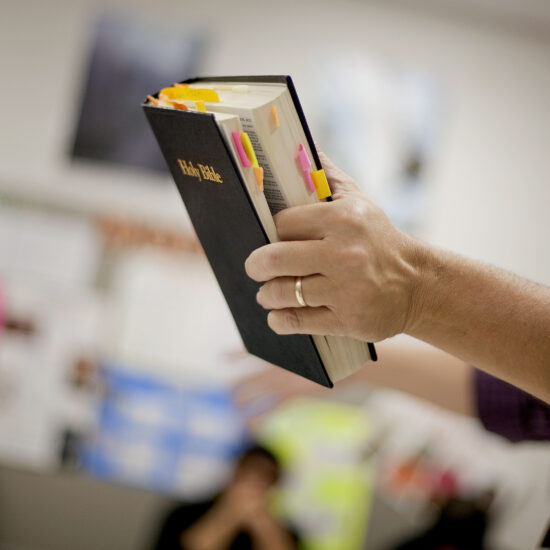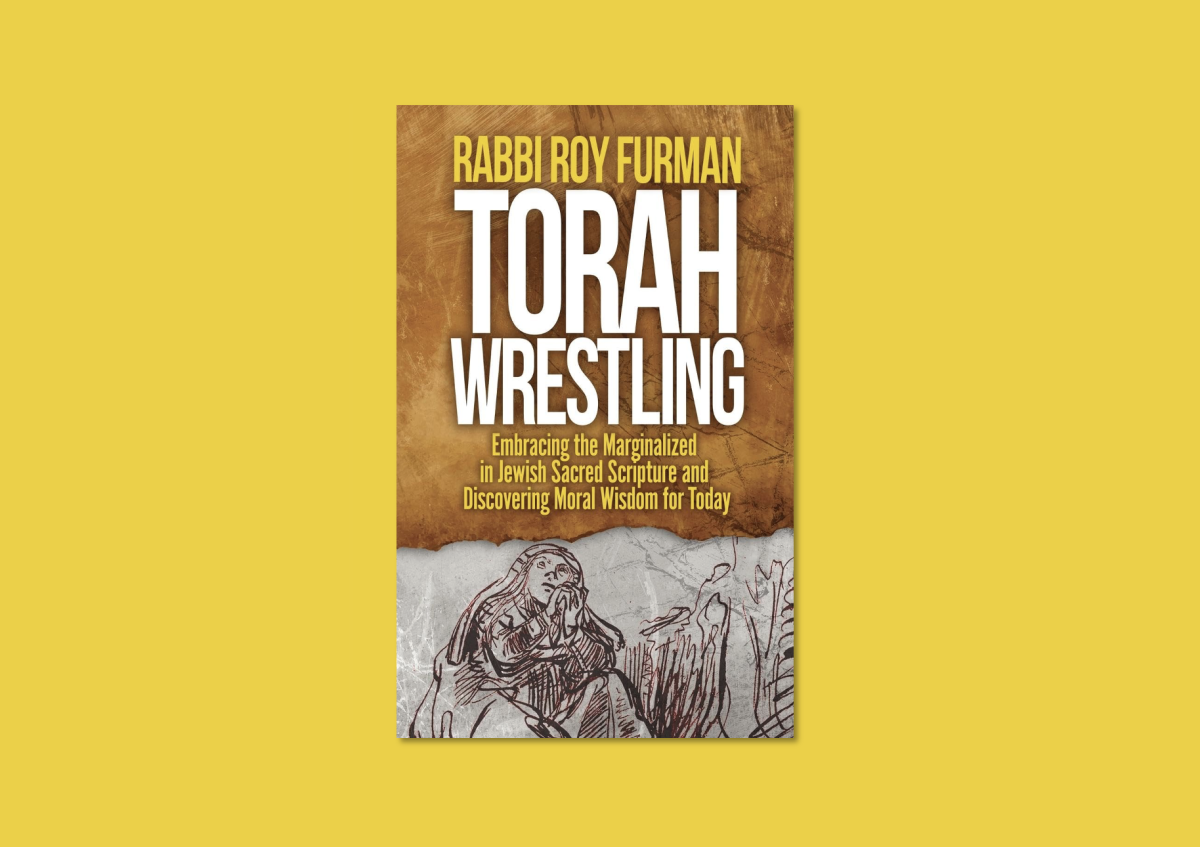
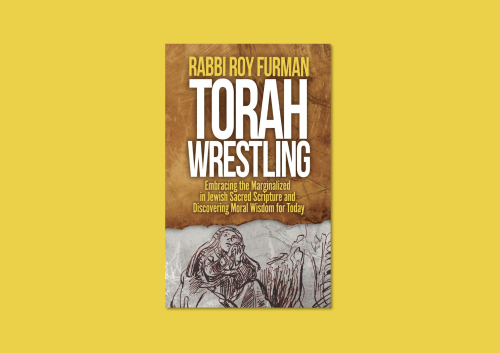
TORAH WRESTLING: Embracing the Marginalized in Jewish Sacred Scripture and Discovering Moral Wisdom for Today. By Rabbi Roy Furman. Preface by Rabbi Allan Kensky. Foreword by Jeffrey Munroe. Afterword by Saeed Kahn. Canton, MI: Read the Spirit Books, 2025. XXIX + 127 pages.
As a Christian, I understand the Torah and the other books that comprise the Jewish Bible (Tanakh) to be part of Christian scripture, what Christians call the Old Testament. These books provide the foundation for the Christian faith as taught and embodied by Jesus, Paul, and the other early Christian writers. As might be expected of me as a Christian, I read these texts through a lens that features Jesus and his teachings. While Christians make use of a Christological lens to read these texts, Jews view these same texts, which they consider to be sacred scripture, through a very different lens or set of lenses. While it is not inappropriate to read the Jewish scriptures through the lens Jesus provides Christians, we who are Christians would be wise to listen to what Jewish interpreters have to say about their own scriptures. After all, Christians have appropriated these texts without the permission of the Jewish community.
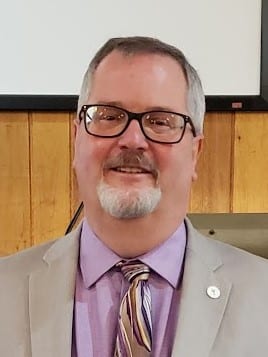
Robert D. Cornwall
Because Christians have, across time, not only appropriated Jewish scriptures but also persecuted and even murdered Jews, many Jews are not keen on engaging Christians in the study of these texts. However, there are some, including Amy Jill Levine, who have chosen to do so. Rabbi Roy Furman is another Jewish interpreter of scripture who invites Christians and Muslims to participate in the conversation about shared texts. We see this invitation present in Furman’s book Torah Wrestling. Rabbi Furman’s reading of Jewish scripture has been influenced by his education at Hebrew Union College—Jewish Institute of Religion, as well as his work with havurot (Jewish fellowship groups), minyanim (prayer groups, as well as Jewish congregations in Los Angeles, Portland, Chicago, and Evanston Illinois, along with his work with Hillel at the University of Southern California and DePaul University.
An important feature of Furman’s Torah Wrestling is the inclusion of a Christian and a Muslim in the conversation. Jeffrey Munroe, editor-in-chief of reformedjournal.com, provides the foreword. Writing as a Christian, Munroe writes approvingly that “Rabbi Furman raises questions that flip common understandings of these texts on their heads. . . . Furman brings compassion and wisdom to these well-known stories, even as he pushes us to raise uncomfortable questions about them” (p. XXI). Saeed Kahn, who happens to be a friend of many years, and who serves as the associate professor of Near East and Asian Studies and Global Studies at Wayne State University, offers a Muslim perspective on Furman’s reflections on Torah. He writes that “A constant thread through Rabbi Furman’s wonderful interpretations of scripture is his centering of the ‘other.’ Rabbi Furman restores and rehabilitates the key figures of the Torah, and even highlights those that may commonly be, at best, supporting actors in the dramas at hand” (p. 125). Kahn is especially taken by Furman’s engagement with the story of Hagar, who is revered in Islam as the “paragon matriarch.”
Like Jeffrey Munroe and Saeed Kahn, I found much to appreciate and learn from as I read Furman’s reflections on the Torah readings featured in Jewish worship in his book Torah Wrestling: Embracing the Marginalized in Jewish Sacred Scripture and Discovering Moral Wisdom for Today. In Torah Wrestling, Furman addresses the Jewish community by unpacking the Torah portions he has engaged with over the years as a rabbi. As he does so, he keeps in mind his Christian and Muslim readers. Therefore, Christians and Muslims are invited to listen in as a rabbi unpacks stories that we all hold in common, even if we might interpret them or use them differently.
As Furman engages with these stories, he starts with a reflection titled “Eve’s Courageous Bite” and ends with a chapter titled “Will You Forgive Me?” This final reflection is based on a sermon preached on Yom Kippur (Day of Atonement). What Furman does in these twenty chapters is engage with these stories critically. In other words, he is willing to argue with the traditional interpretations and usage of stories that he finds problematic. It’s something that Christian interpreters should do as well. He also lifts up figures that often get set aside, including Hagar and Dinah (Jacob’s only daughter). He even has a chapter that asks an unexpected question: “Was That Golden Calf So Bad?” In asking that question, he notes that the texts that describe this event at times contradict each other or at least provide the possibility of an alternative interpretation. So, was Moses wrong in attacking the people for creating the Golden Calf? Furman holds out the possibility.
In his introduction, Furman provides a clue to the way he offers these reflections on the Torah portions. He writes that “As a rabbi, a Jew, and a student of Torah, I find myself drawn to those biblical men, women, and even children who we tend to marginalize as we reflect on Torah portions throughout the year” (p. xxiv). For example, Furman offers the reader a reflection that focuses on Hagar rather than Sarah, which might be rather unexpected since Sarah is the Jewish matriarch, not Hagar. I also especially appreciated his commentary about the role the Amalekites played in the scriptural accounts, such that at different points they appear to be wiped out (at God’s command), but keep appearing in other stories, only to be wiped out again. While Furman doesn’t mention this, it is appropriate to note that at one point, in rallying Israeli’s in his war in Gaza, Benjamin Netanyahu spoke of the Gazans as Amalekites. The intimation was that they were fighting a group that warranted extermination. As we read through the reflections on Torah, it is clear that Furman is uncomfortable with the violent portions, especially those in which God appears to authorize genocide. These stories, in his view, should not be considered authoritative. With this, I would agree. As the subtitle reveals, Furman focuses on the role that the marginalized play in Torah, such that we might find moral wisdom for our own times.
As I read Furman’s Torah Wrestling, I concluded that this is the kind of book Christian preachers will want to consult as they engage with sacred texts that Christians share in common with Jews. He invites us to walk along with him as he engages with these texts, even as he engages in conversation with rabbis who went before him. Except for the final chapter, which is a Yom Kippur sermon, these are not sermons. He doesn’t directly apply these stories to the present day, leaving the application part up to the reader. With this in mind, he takes a rather difficult path by engaging with some of the more difficult biblical stories, stories we might wish to avoid (the kind of stories the Revised Common Lectionary often avoids). He writes this concerning the choice of Torah readings, noting that he “will be drawing our attention toward texts that many people find troubling and those that might provide a moral counterbalance” (p. xxvi).
As I ponder the messages that Rabbi Furman offers us in his book Torah Wrestling as he explores difficult sacred texts, I appreciate this word from Saeed Kahn, who writes from a Muslim perspective. “Religion was never intended to be an abstract concept, and scripture was never meant to be a collection of esoteric principles, out of reach or applicability by its intended audience. Rabbi Furman shows us that both religion and scripture are addressing those who may be striving for perfection, knowing full well that such a pursuit is presumed unattainable” (p. 126). With that assessment, I am in complete agreement, such that I believe Rabbi Roy Furman has offered us all a gift to take to heart, especially in these most divisive times.
This review originally appeared on BobCornwall.com.
Robert D. Cornwall is an ordained minister in the Christian Church (Disciples of Christ). Now retired from his ministry at Central Woodward Christian Church (Disciples of Christ) of Troy, Michigan, he serves as Minister-at-Large in Troy. He holds a Ph.D. in Historical Theology from Fuller Theological Seminary and is the author of numerous books, including his latest “Second Thoughts about the Second Coming: Understanding the End Times, Our Future, and Christian Hope” coauthored with Ronald J. Allen. His blog Ponderings on a Faith Journey can be found here.




